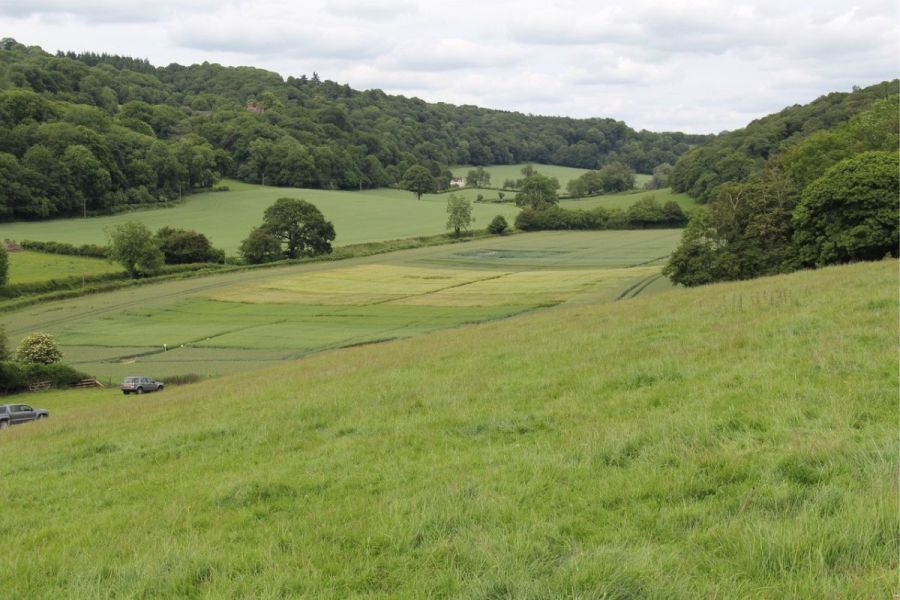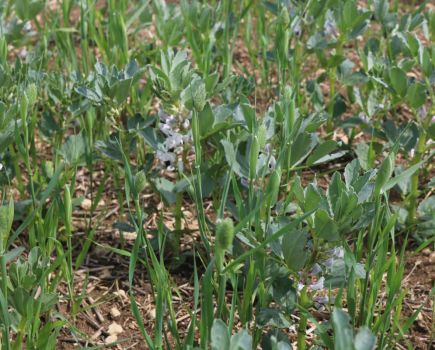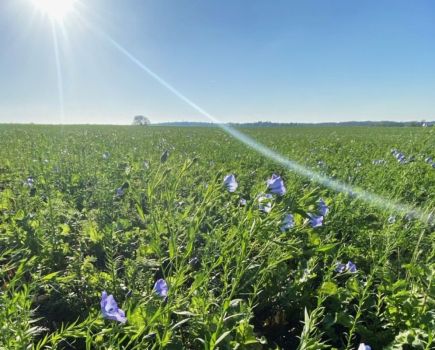Ensuring an efficient agricultural business across every productive square metre of the land is the primary aim of Gatley Farms in Herefordshire. CPM learns how this approach is complementing the farm’s sustainability goals.
“Fields planted with cover crops are less likely to move or run during adverse conditions because the ground is preserved.”
By Janine Adamson
Sustainable agriculture can mean many things to many people, but at the heart of its definition is meeting the requirements of both existing and future generations. This is certainly front of mind for farm manager James Oliver, and is a reason behind recent changes.
James took over the role at the Gatley Estate in Leominster, Herefordshire, back in 2020 – just prior to the start of the Covid-19 lockdown. His management strategy centres around efficiency, to enable the farm to support its staff, their families and its own development.
As expected given its geography, the estate has always been a mixed enterprise, currently juggling a large hectarage of arable cropping, grassland, forestry and a suckler beef herd based on the Stabiliser breed.
At the core of the rotation is potatoes – grown one in six – mostly for processing. The rest consists of winter wheat, oilseed rape, winter oats, winter barley and temporary grassland.
James says one of the first changes he implemented was to disperse the 1200-head sheep flock and increase cattle numbers. “The cows integrate well with the arable system because FYM (farmyard manure) makes an excellent soil conditioner ahead of potatoes.
“The cattle are all grassfed plus some bought in TMR (total mixed ration); they’re also given stockfeed potatoes which makes the system very circular,” explains James.
An action which he champions in enabling potatoes to remain viable is the use of cover crops. “We plant cover crops ahead of potatoes using a Westerwolds ryegrass and vetch mix. Half of that is then cut as silage for the cows and the rest is left for contract sheep grazing.
“There are many advantages – we’ve noticed that fields planted with cover crops are less likely to move or run during adverse conditions because the ground is preserved. We’re battling steep gradients with silty-clay-loam soils so land can be at high risk of run-off,” he says.
Equally, from an income-perspective, James has found cover crops to be a means of stacking revenue. By treating them as a cash crop he’s eligible for SFI payments, a grant from Severn Trent (for trials), a bonus from McCain’s and rent from sheep grazing.
But, he admits there may be long-term impacts from the choice of cover crop species. “The mix establishes well and is cost effective but we’ll have to monitor pest pressure including wireworm and free living nematodes. I hope we’ve not made a rod for our own backs,” he raises.
Another change James has instigated is tillage related. Back when he took over as farm manager, the whole cropping area was cultivated using a plough or deep tillage. However, wanting to move away from this approach meant purchasing a Mzuri strip-till system.
“Direct drilling doesn’t suit the estate because of the high silt content of the soils – in some areas this is more than 60%. Introducing the Mzuri was a major change for the farm but meant we could significantly reduce our horse power, diesel and workload requirements,” he explains.
With a combi-drill as a back-up for when conditions are too poor for the Mzuri, James says there’s greater flexibility in the system while improving the quality of the farm’s soils. “It’s about respecting the silty soils while increasing the levels of organic matter.
“Although we’ve not measured it officially, we seem to be able to travel 8-10 days earlier compared with the ploughed land. There doesn’t appear to be a yield penalty at the moment from using the strip-till either.”
Despite inclement weather conditions, most of the estate’s crops this season have been planted using the Mzuri, with just 80ha experiencing the plough and combi drill.
For potatoes specifically, James has reduced cultivations associated with growing the crop by removing the ridging pass. “We create ridges using the 3-bed tiller supported by GPS technology. This is more efficient and reduces a pass of a machine while improving accuracy,” he says.
By investing in the correct equipment for the situation, James believes he’s made choice decisions without having to compromise on the farm’s rotation, which he says hasn’t really changed for some time.
Another purchase was a John Deere Hillmaster combine. “I wasn’t in the market for a new combine at all, but seeing a demo machine being trialled on our steep terrain soon changed my mind. You can level it much easier which coupled with a draper-style header, has reduced losses significantly.
“The combine is working more optimally and because there are less losses, there are less volunteers in the following rotations,” he explains. And despite being a smaller piece of kit, James says the working hours have been reduced simply based on the machine being more suitable for the job.
Whereas the estate’s machinery has moved forward considerably, James still takes a conventional approach to crop inputs, supported by some newer technologies. “We implement what would be viewed as conventional plant protection programmes, for example fungicides, but supplemented by plant health products.
“This is particularly useful because we don’t irrigate our potatoes – biostimulants have come into their own in improving rooting, green leaf area retention and reducing plant stress before herbicide applications. We tend to use amino acids and humic acids to address these requirements.”
And although the farm suffers from both cabbage stem flea beetle and slug pressures, it’s deer management which is the primary concern.
“We have large populations of fallow deer and increasing numbers of muntjac. They cause significant damage to the forestry and arable aspects of the business. I would say deer are the farm’s biggest pest, along with bovine tuberculosis (TB) in the cattle,” explains James.
He also notes that finding qualified, well-rounded members of staff can prove a challenge. “Given that the industry seems to be lacking decent operators who are happy to work at mixed enterprises such as Gatley, we’re grateful to have a highly motivated, skilled and hardworking team supporting the estate.”
From a wider estate perspective, SFI actions are being implemented across the board. Most grassland is entered into herbal leys (SAM3), all soils are regularly sampled (SAM1), winter bird feed is grown on less productive land (AB9), fields are squared off (AHL3/grassy field corners or blocks) and hedgerows are managed (HRW1/HRW2), among others.
According to James, SFI suits the estate due to its geographical location. “The return is reasonable from SFI; we’ve chosen actions which are feasible and work within our constraints. Moving forward, we plan to utilise variable rate technologies for seed as well as p and k if possible which will open up more actions,” he says.
One part of the business which James is particularly proud of is a diversification project – home-grown peonies for the cut flower market. Although many may view this as a curve ball, he says because the flower beds are created and topped using existing potato equipment, it’s relatively low risk.
“Having sown 10,000 plants which should yield 10-20 stems each by maturity, done well it’s a lucrative business. We’re also establishing a display garden as an attraction with around 300 different varieties of peony,” he concludes.
This article was taken from the latest issue of CPM. Read the article in full here.
For more articles like this, subscribe here.
Sign up for Crop Production Magazine’s FREE e-newsletter here.




